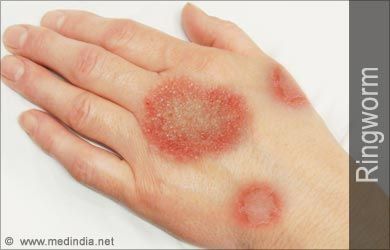How Fast Does Ringworm Spread

But the species of fungi.
How fast does ringworm spread. Follow this ringworm remedy once a day at least until ringworm clears. A ringworm infection can be spread in many direct and indirect ways including. It may be passed from cats to dogs to people in any number of spreading paths. Ringworm is a contagious fungal infection caused by common mold like parasites that live on the cells in the outer layer of your skin.
Ringworm of the nails doesn t create a ring like pattern. Covering skin areas that are infected with ringworm does not guarantee that a person is not contagious. Ringworm spreading fast is common but by following above mentioned precautions you can break its cycle. Other basic hygiene practices like not sharing razors can help prevent the spread of ringworm.
Ringworm is highly contagious and can spread through contact with other areas of the body and other people. Ringworm in cats is not typically serious but it can spread to people as well as other animals such as dogs. And athletes and gymgoers should be sure to wipe down or avoid sharing athletic equipment. Transmission occurs through direct contact between infected and uninfected individuals.
Ringworm infection is common in wrestlers. You can also catch ringworm from an infected pet though this is less common. Sharing towels clothing and bedding can spread it from person to person. Theoretically direct skin to skin contact in water or a swimming pool or hot tub may spread the infection but is far less likely to do so than direct skin to skin contact elsewhere.
If the ringworm lesions continue to spread or new ones appear to develop despite 2 weeks of treatment see a doctor immediately. Ringworm remains contagious for some time even when a person is undergoing treatment. You can contract ringworm by touching an animal with ringworm. It can be spread in the following ways.
Ringworm often spreads by direct skin to skin contact with an infected person. The fungal spores responsible for the spread can remain viable for up to 18 months and typically spread through shedding or breaking of infected hairs.














































